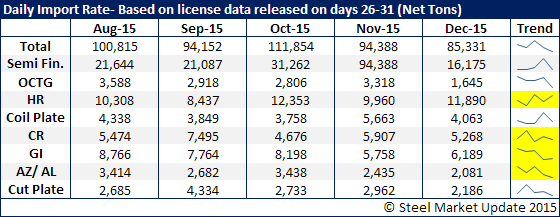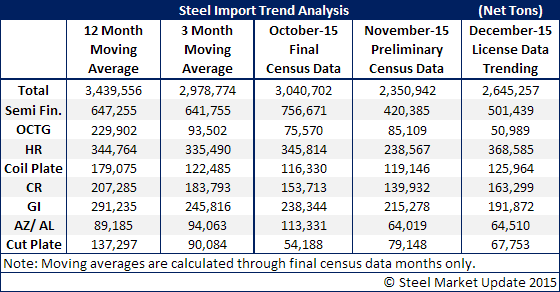Prices

December 29, 2015
December Foreign Steel Imports Trending to Low 2 Million Net Tons
Written by John Packard
The US Department of Commerce released the latest license data regarding foreign steel imports into the United States for the month of December 2015. Based on licenses data December is trending toward the low 2 million net tons to as much as 2.6 million net tons. However, we have noticed that the trend recently has been for license data to overstate the monthly totals by 200,000-300,000 net tons. A good example is November 2015 which had licenses for 2.7 million net tons and the month actually came in at 2,350,942 net tons.
We are of the opinion that December will be the same to slightly lower than November as the daily license data rate is well below that of November, as you can see by the table below.









